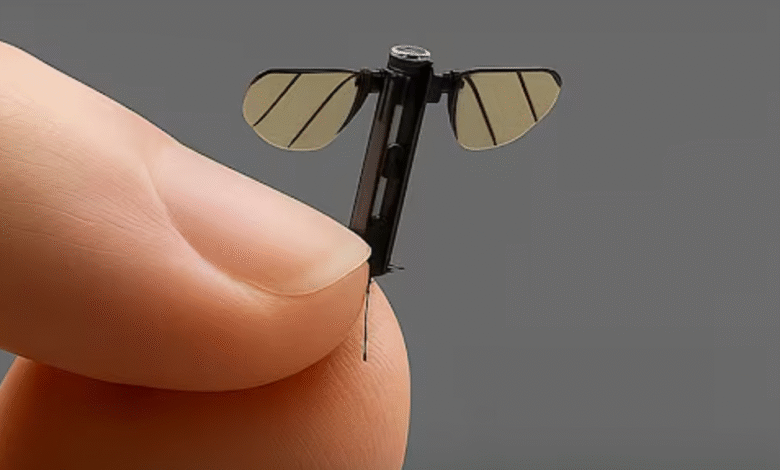China Unveils Mosquito-Sized Spy Drone for Battlefield Surveillance, Covert Operations

China’s National University of Defense Technology (NUDT) has publicly unveiled a jaw-droppingly small military drone—mosquito-sized, in fact—intended for covert reconnaissance and espionage. The tiny unmanned aerial vehicle (UAV) is only about the size of a human fingernail (roughly 0.6 cm), with a sleek black body, leaf-like wings, and spindly legs.
Key Features & Capabilities
Micro-bionic design: Built to mimic a mosquito, the drone integrates motors, sensors, control circuits, and possibly miniature cameras and microphones—all controlled via smartphone.
Stealthy operation: Nearly invisible to naked eyes and hard to detect by radar or infrared systems, it can infiltrate indoor spaces or restricted areas.
Surveillance-focused: Engineered for “information reconnaissance and special missions on the battlefield” according to Liang Hexiang, a student at NUDT, speaking on CCTV‑7.
Expert Insights & Caveats
Short battery life: Due to its tiny form, onboard batteries limit flight time and operational range. Some experts believe it needs to operate close to its control unit.
Environmental vulnerability: Extremely susceptible to wind, even minor indoor drafts—from air conditioning or open windows—could disrupt flight.
Tool, not weapon: Primarily a surveillance platform; it carries no known payload like explosives, but its capabilities could evolve.
Global Context & Implications
Similar tech already exists, such as Norway’s palm-sized Black Hornet, used by Western militaries. But China’s design goes further, blending miniaturization with clandestine stealth.
Experts warn of future threats: eavesdropping in private or sensitive spaces, corporate espionage, or even weaponization (biological agents or micro-assisted espionage).
This drone reflects China’s rapid advancement in military robotics, hinting at a new invisible frontier in surveillance and warfare.
See It in Action:
Final Take
China’s mosquito-like microdrone is less sci-fi threat and more surveillance marvel—a silent, nearly invisible tool designed to peek where larger UAVs can’t go. It underlines three core points:
1. Innovation: China is accelerating its leadership in micro-robotics.
2. Surveillance evolution: The drones are oriented toward intelligence gathering, not warfare—at least for now.
3. Emerging challenges: As tech matures, their applications could veer into dangerous terrain—spying in homes, offices, or even biotech espionage.
While still limited by battery capacity and environmental conditions, this breakthrough is a glimpse into a future of drone warfare and espionage—one defined by invisibility, micro-closeness, and unsettling intimacy.





